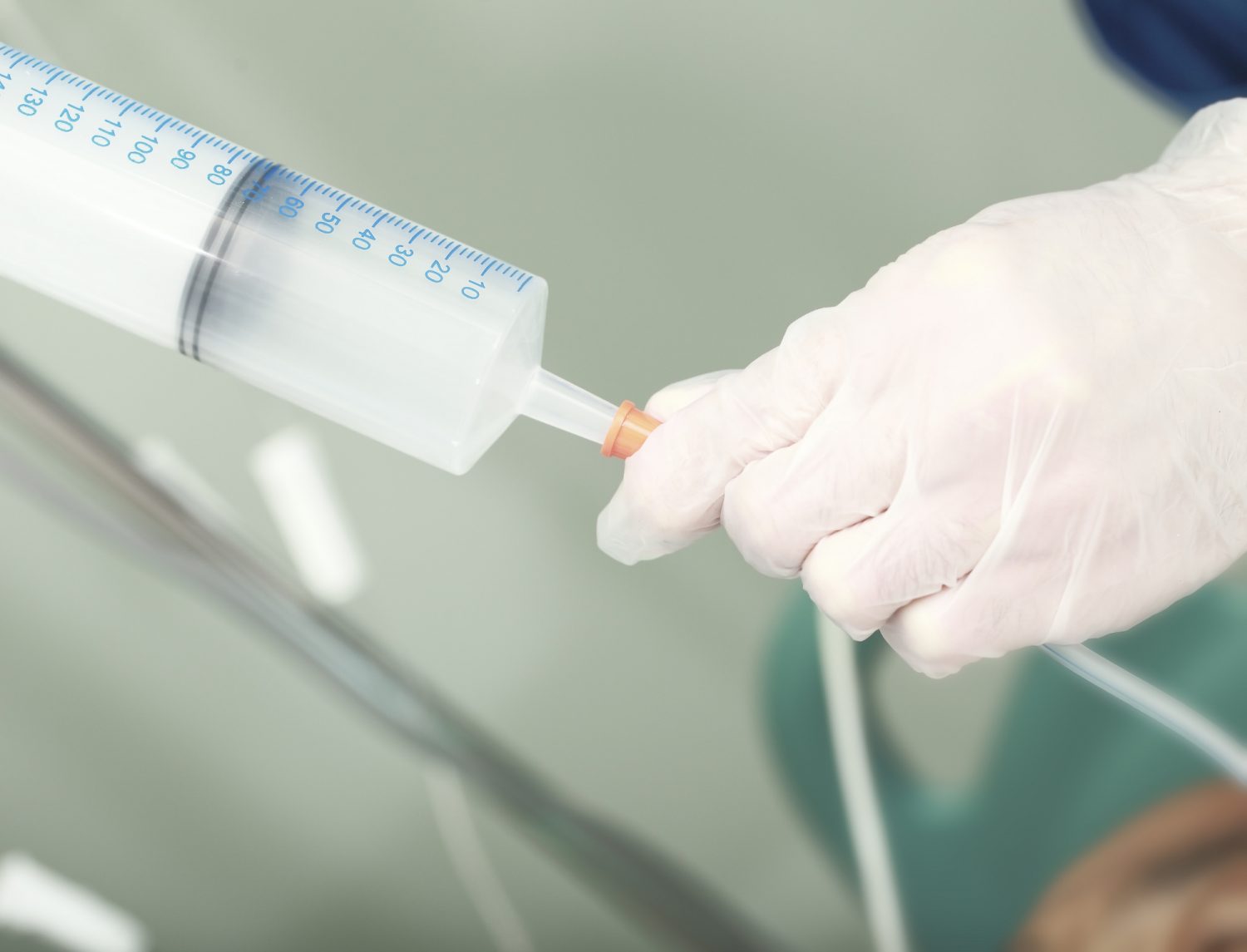Tube Feeding and Hydration: Staying Properly Hydrated
Tube Feeding and Hydration: Staying Properly Hydrated

When managing tube feeding at home in Dubai(التغذية الأنبوبية في المنزل في دبي), one of the most overlooked yet essential aspects of care is hydration. While most people naturally stay hydrated through regular eating and drinking, tube-fed individuals often require a more structured and attentive approach to fluid intake. Without sufficient hydration, patients may face complications that affect their comfort, recovery, and overall health. Understanding how to maintain proper hydration through tube feeding is vital for both caregivers and patients.
Why Hydration Matters in Tube Feeding:
Water plays a critical role in nearly every bodily function. For those on enteral feeding, ensuring an adequate intake of fluids can prevent a range of problems, from constipation to kidney strain. Unlike oral eaters who can sip water throughout the day, tube-fed individuals rely entirely on scheduled fluid administration.
Key Functions of Proper Hydration:
-
Supports digestion and nutrient absorption
-
Maintains kidney function and flushes out waste
-
Prevents constipation and urinary tract infections
-
Helps regulate body temperature and blood pressure
-
Aids in the transportation of medications and nutrients
Without mindful hydration, patients can become vulnerable to dehydration-related complications.
Signs of Dehydration in Tube-Fed Patients:
Caregivers need to be vigilant in identifying symptoms of fluid imbalance early. Dehydration may manifest subtly but can escalate quickly if not addressed.
Common Warning Signs Include:
-
Dry or sticky mouth
-
Decreased urine output or darker urine
-
Sunken eyes or dry skin
-
Headaches or dizziness
-
Lethargy or confusion
-
Increased heart rate or low blood pressure
If any of these signs are noticed, it’s crucial to consult a healthcare provider promptly.
Determining Daily Fluid Requirements:
The amount of fluid a patient needs varies based on several factors, including age, weight, medical condition, activity level, and the climate—particularly relevant in hot regions like Dubai.
General Fluid Guidelines:
-
Adults generally need around 30–35 mL of fluid per kilogram of body weight per day
-
Children and infants have higher fluid needs per kilogram
-
Extra fluids may be required during fevers, diarrhea, or excessive perspiration
-
Patients with kidney or heart conditions may need regulated intake
A healthcare provider or dietitian can help determine the most appropriate daily amount.
Types of Fluids Used in Tube Feeding:
Fluids can be administered in several forms through feeding tubes. It’s not always just water—other liquids can also contribute to overall hydration.
Common Fluid Options Include:
-
Sterile water (most commonly used for flushing and hydration)
-
Oral rehydration solutions to balance electrolytes
-
Juices or broths (only when medically approved)
-
Feeding formulas (which often contain a percentage of water)
Always follow professional medical advice before introducing any new type of fluid.
When and How to Give Water Through a Feeding Tube:
Scheduling and technique matter significantly in delivering fluids safely and efficiently. The timing of water administration depends on the feeding method used.
Best Practices for Hydration Scheduling:
-
Administer water before and after feedings to flush the tube
-
Provide additional water throughout the day between formula feedings
-
Use a syringe or feeding pump, depending on the patient’s tolerance
-
Water should always be given at room temperature unless advised otherwise
Flushing the tube with water also helps prevent clogging and ensures proper formula flow.
Special Considerations in Dubai’s Climate:
The hot and often humid environment in Dubai means patients may lose more fluids than usual through sweat and respiration. This can increase the risk of dehydration if not carefully managed.
Tips to Combat Heat-Related Fluid Loss:
-
Monitor hydration more closely during hot months
-
Increase fluid intake on warmer days, with medical approval
-
Keep indoor spaces cool and well-ventilated
-
Watch for early signs of overheating or heat exhaustion
Tailoring hydration plans to Dubai’s weather conditions is a smart preventive step.
Tips for Caregivers Managing Hydration:
Managing hydration at home doesn’t need to be complicated but does require consistency and observation.
Practical Tips Include:
-
Keep a daily hydration log or chart to track fluid intake
-
Set alarms or reminders to ensure timely administration
-
Use measuring tools like syringes, gravity bags, or pumps to track volume
-
Communicate with healthcare providers about any unusual symptoms
-
Flush the tube regularly to maintain cleanliness and function
These habits help reduce stress and improve caregiving quality.
Adjusting Hydration During Illness or Recovery:
During illnesses or after surgeries, the body may demand more fluids to compensate for fever, vomiting, or increased metabolic needs. Failing to adjust fluid intake can delay recovery or worsen symptoms.
How to Manage in Special Cases:
-
Increase water or electrolyte solutions as per medical guidance
-
Check for fluid retention issues in patients with certain conditions
-
Reassess hydration plans during medication changes
-
Ensure patients with vomiting or diarrhea are closely monitored for dehydration
Always coordinate with a healthcare provider during such situations.
Preventing Tube Blockages Through Hydration:
Proper hydration is also critical for maintaining the functionality of the feeding tube itself. Dehydration can increase the risk of blockages due to thick formula residues or medication buildup.
Prevention Methods:
-
Flush with water before and after administering formula or meds
-
Use only crushed or liquid medications approved for enteral use
-
Regularly inspect the tube for signs of clogging
-
Never mix medications with feeding formula without professional guidance
Clean, hydrated tubes ensure smoother feeding routines and fewer complications.
The Role of Dietitians in Fluid Management:
Dietitians are indispensable in crafting a balanced fluid and nutrition plan. They evaluate patient needs and customize fluid regimens to align with caloric intake, medical history, and current symptoms.
Dietitian-Supported Benefits:
-
Adjust hydration based on individual tolerance
-
Suggest appropriate electrolyte replacements
-
Recommend fluid-rich formulas when needed
-
Monitor weight changes that may indicate fluid issues
Consulting with a dietitian ensures holistic, personalized care.
Creating a Routine for Success at Home:
A successful hydration plan fits seamlessly into the broader feeding schedule and becomes part of daily routines.
How to Build Effective Habits:
-
Incorporate fluid administration into morning and evening routines
-
Involve the patient, if possible, to increase awareness
-
Educate all caregivers involved in the process
-
Keep supplies clean and accessible
-
Review routines periodically for improvements
Consistency reduces errors and improves patient comfort over time.
Conclusion:
Hydration is just as vital as nutrition for patients on enteral feeding. For those managing tube feeding at home in Dubai, understanding how to maintain optimal fluid balance is a cornerstone of safe and effective care. By recognizing the signs of dehydration, following structured schedules, and working closely with medical professionals, patients and caregivers can ensure long-term comfort, health, and peace of mind.



